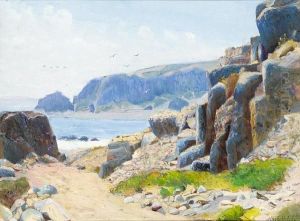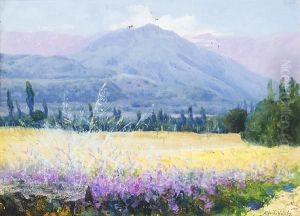Alfredo H. Helsby Paintings
Alfredo H. Helsby Hazell was a notable Chilean-British painter, born in Valparaíso, Chile, in 1862. His artistic journey began under the influence of his family, with his father, Thomas Helsby, being an amateur photographer and his brother, Thomas Helsby Hazell, also showing interest in the arts. Helsby's passion for painting was evident from a young age, and he dedicated his life to capturing the essence of the Chilean landscape, its cities, and its people.
Helsby's education in art was primarily self-taught, supplemented by informal guidance from established artists. Throughout his career, he became renowned for his skillful representation of light and atmosphere, characteristics that made his landscapes and seascapes particularly captivating. His works often depicted the dynamic and rugged beauty of Chile's geography, from its coastal areas to its urban vistas.
In 1884, Helsby's talent gained significant recognition when he was awarded a silver medal at an exhibition in Santiago, marking the beginning of his prominence in the Chilean art scene. He continued to exhibit his works both nationally and internationally, contributing to his growing reputation as a leading landscape painter of his time.
Despite his British heritage, Helsby's heart belonged to Chile, the country where he spent most of his life and drew his inspiration. His paintings serve as a historical record, capturing the transformation of Chile's urban and rural landscapes during the late 19th and early 20th centuries.
After a long and fruitful career, Alfredo H. Helsby passed away in 1933. His legacy lives on through his contributions to Chilean art, with his works held in high esteem and displayed in various museums and collections both in Chile and internationally. Helsby's dedication to portraying the natural and urban beauty of Chile has cemented his status as one of the country's most revered landscape artists.













